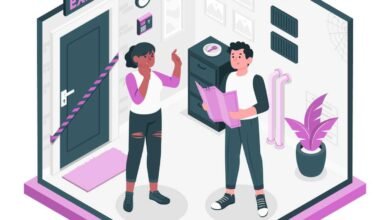Innovative Technology &Approach To Literacy

Literacy education is constantly evolving, with new technologies and approaches emerging every day. In this blog, we will explore the innovations in literacy education that are revolutionizing the way we teach and learn. We will break down the emerging technologies and approaches to literacy learning, and the impact they are having on our education systems. By the end of this post, you will have a better understanding of the latest advancements in literacy education and how they are changing the way we learn.
JohnJezzini
New Technologies In Literacy Education
Literacy is essential for success in any field, and it’s especially important for those in the workforce. In order to ensure that all workers are able to participate in the global economy, literacy skills are essential.
For example, educational technologies such as apps or websites can be used to enhance literacy learning by providing supplemental materials or interactive exercises. They can also be used to track student progress and provide feedback on their progress.
At the same time, educators have an important role in exploring the learning potential of new technologies and approaches. It’s up to educators to determine whether these new technologies are actually useful for teaching literacy skills and if they’re worth integrating into current classroom practices. In addition, educators need to consider issues such as access and affordability when choosing which educational technology tools to use in their classrooms.
Breaking Down Emerging Approaches To Literacy Learning
Literacy is an essential skill for all adults, and it’s important that we find ways to help our students learn how to read and write effectively. Fortunately, there are a number of innovative approaches to literacy learning that are being explored using technology. Below, we’ll take a look at some of these methods and discuss their potential benefits for students.
One popular approach to literacy learning is digital learning. With digital learning, students can learn information from anywhere in the world – no matter where they are! This is especially helpful for students who may not have access to traditional educational resources or who may be traveling for school.
Another way that technology is helping to improve literacy development is through big data analytics. By analyzing large data sets, educators can identify trends and patterns in student reading and writing skills.
In addition, online resources are an important part of any Literacy curriculum. These resources can be used in conjunction with traditional instruction or as a stand-alone supplement to support student engagement and mastery of literacy skills. For example, interactive multimedia materials often contain rich content that’s easy for students to understand – making them perfect tools for fostering increased comprehension in readers.
Title: 4 Tips To Help You Write Better Emails
Subtitle: How To Write Emails That Get Results
Tone: Helpful
Talking Points:
– Start with a strong opener
– Use action words when possible
– Keep your sentences short and sweet
– Use active voice when writing.
Taking A Deeper Look At The Benefits And Challenges Of New Technologies For Literacy Education
It’s been said that the future of literacy education is digital. And, with good reason. Emerging technologies – such as machine learning, artificial intelligence, and automation – are changing how we learn and how we teach. They’re also allowing students to build 21st Century skills in ways never before possible.
In this section, we’ll explore the potential of these technologies in greater detail and discuss some of the challenges and opportunities they present for students, educators, and stakeholders. We’ll also look at strategies for maximizing their effectiveness in literacy education.
The Power Of Storytelling-Using Narratives To Enhance Literacy Skills And Empathy
The Impact Of Innovations On Literacy Education
Innovative technologies have the potential to improve literacy education in a variety of ways. By using tools like virtual reality, augmented reality, and machine learning, educators are able to engage students in new and innovative ways that help them learn more effectively. In addition, new methods of assessment are being developed that allow educators to assess student progress more accurately and provide feedback that is tailored to their individual needs.
Below, we’ll take a look at five examples of how innovative technologies are being used to improve literacy education. We’ll also discuss the impact of these technologies on student engagement and progress, as well as some challenges
All In All
In conclusion, literacy education is changing rapidly due to emerging technologies and approaches. These technologies are revolutionizing the way we teach and learn, but they also come with challenges. Educators must be prepared to use these tools effectively in order to ensure that all students have access to quality educational resources.




